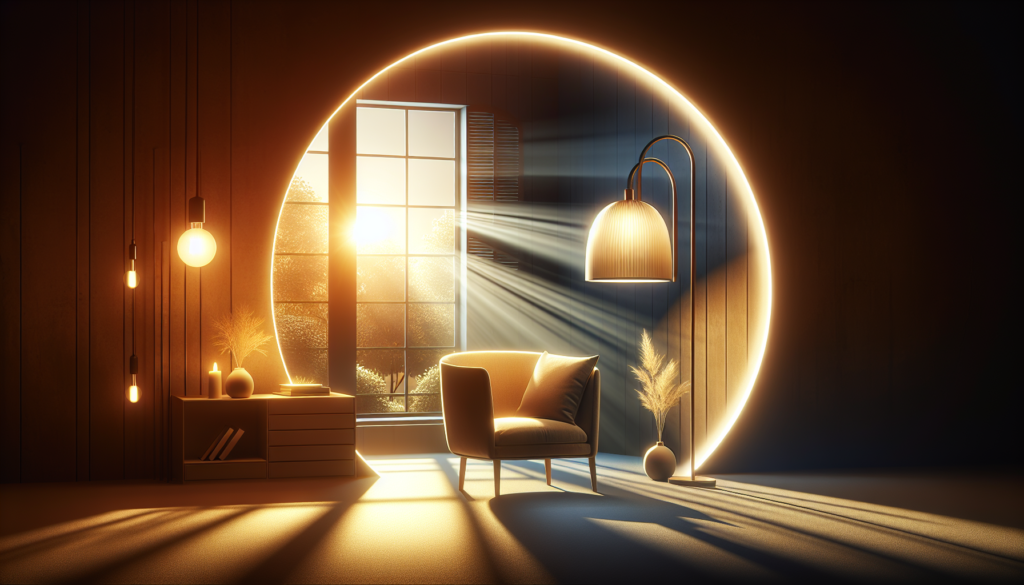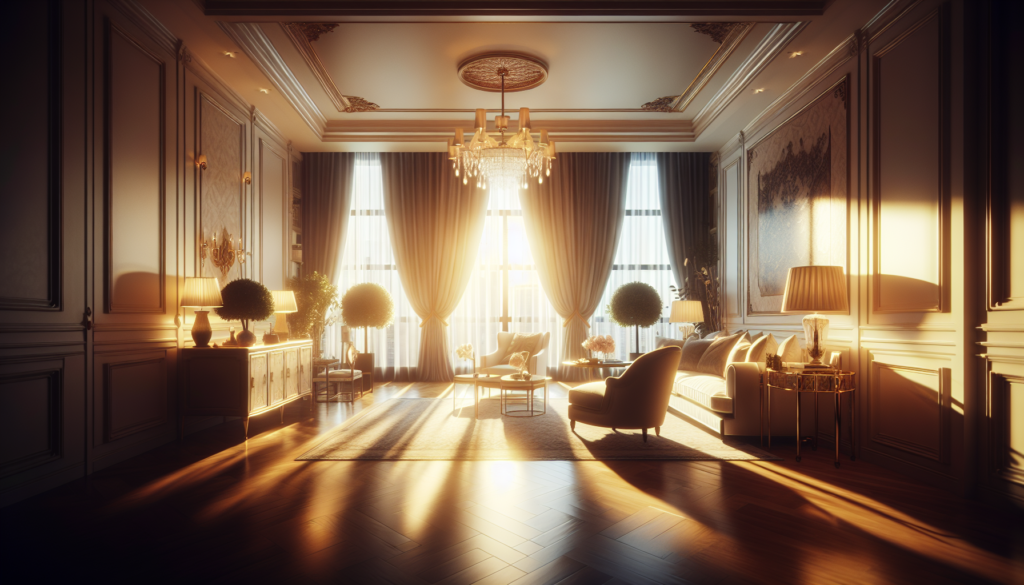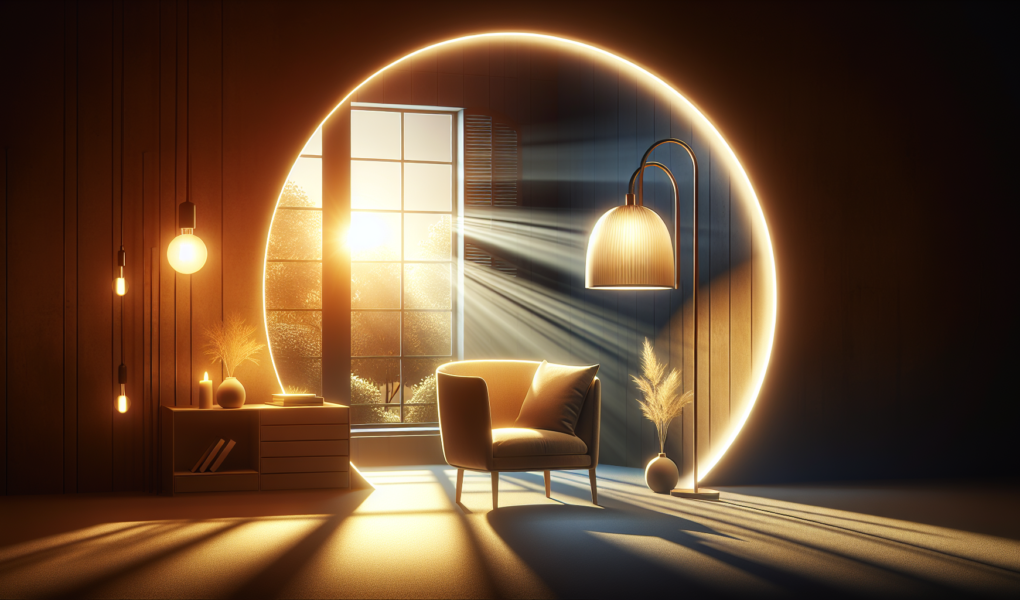In “Mastering Ambient Lighting Techniques,” you will discover everything you need to know about creating the perfect atmosphere in any space. Whether you’re a professional photographer or someone who simply wants to enhance the ambience of your living room, this article will guide you through the ins and outs of ambient lighting. From understanding different types of lighting to expert tips and tricks, you’ll learn how to effortlessly transform any room into a captivating and inviting environment. Get ready to take your lighting skills to the next level and captivate everyone with the right ambiance for any occasion.
Overview of Ambient Lighting
Ambient lighting plays a crucial role in creating a welcoming and comfortable atmosphere in any space. It refers to the overall, general illumination that brightens up a room in a soft and gentle manner. Understanding the importance of ambient lighting and the different types available is key to creating the perfect lighting scheme for your home or any other space.
Understanding Ambient Lighting
Ambient lighting is often referred to as general or background lighting. It is a foundational layer of illumination that sets the overall mood and ambiance of a room. Unlike task lighting, which is focused and task-specific, ambient lighting provides a gentle and even distribution of light, ensuring that no area is left in shadow. It is meant to create a warm and inviting environment, allowing people to move around comfortably and perform basic activities.
Importance of Ambient Lighting
One of the main reasons ambient lighting is essential is that it creates a sense of balance in a room. It fills in the shadows created by natural and task lighting, helping to reduce eye strain and fatigue. Additionally, it provides an overall sense of warmth and coziness, making a space more inviting and comfortable. Ambient lighting also serves as a backdrop to other lighting fixtures and helps highlight the architectural features of a room. It sets the stage for other lighting techniques and enhances the overall aesthetic appeal of a space.
Types of Ambient Lighting
There are various types of ambient lighting to choose from, each with its own unique features and characteristics. Some popular options include recessed lighting, track lighting, chandeliers, pendant lights, and wall sconces. Recessed lighting is discreetly installed in the ceiling and provides a seamless and unobtrusive source of ambient light. Track lighting allows for adjustable light fixtures that can be directed to specific areas of a room. Chandeliers and pendant lights add a touch of elegance and can become the focal point of a space. Wall sconces provide a soft and diffused glow, creating a warm and inviting ambiance.
Choosing the Right Ambient Lighting
Selecting the most appropriate ambient lighting for a room involves considering the room’s purpose, evaluating natural lighting, and determining the desired mood.
Consider the Room’s Purpose
The function of a room plays a significant role in determining the type of ambient lighting it requires. For example, in a living room or bedroom, a warm and cozy ambiance may be desired, while in a kitchen or office space, a brighter and more energizing environment may be preferred. Understanding how the room will be used will help in narrowing down the options for ambient lighting.

Evaluate Natural Lighting
Take note of the natural lighting available in the room. Consider the direction and intensity of the sunlight at different times of the day. Natural light can complement ambient lighting and create a dynamic and ever-changing atmosphere. It is essential to strike a balance between natural and artificial light to ensure that the room is well-lit throughout the day and night.
Determine Desired Mood
Think about the mood or ambiance you want to create in the room. Consider whether you desire a warm and cozy setting, a bright and energetic space, or a calm and serene environment. Different lighting options can help achieve different moods. For example, warm-toned and dimmable lights can create a relaxing atmosphere, while brighter and cooler-toned lights can evoke a more energetic and lively ambiance.
Strategic Placement of Lights
Strategic placement of ambient lights can enhance the overall lighting scheme in a room and create a balanced and visually appealing environment.
Identify Focal Points
Identifying the focal points of a room is essential for effective placement of ambient lighting. Focal points can include architectural features, artwork, or statement pieces of furniture. By highlighting these elements with well-placed ambient lights, you can draw attention to them and create a visually pleasing focal point in the room.
Plan for Even Distribution
To ensure that the ambient lighting evenly illuminates the entire space, it is crucial to plan for even distribution. This entails placing light fixtures strategically throughout the room, taking into account the size and layout of the area. Avoid concentrated spots of light or dark areas by spacing out the light sources evenly.

Utilize Hidden Light Sources
Incorporating hidden light sources, such as LED strips or rope lights, can add an extra layer of ambient lighting and create a warm and inviting glow. These hidden lights can be installed under cabinets, along staircases, or behind furniture to provide a soft and diffused illumination that fills the room without being directly visible.
Color Temperature and Ambient Lighting
Color temperature refers to the warmth or coolness of light, measured in Kelvin. Understanding how color temperature affects the ambiance of a space and choosing the right color temperature for ambient lighting is crucial.
Understanding Color Temperature
Color temperature is categorized into three main groups: warm, neutral, and cool. Warm tones, typically ranging from 2700K to 3000K, emit a cozy and inviting light similar to that of incandescent bulbs. Neutral tones, around 3500K to 4000K, provide a more balanced and natural light. Cool tones, around 5000K to 6500K, give off a bright and crisp light reminiscent of daylight.
Choosing the Right Color Temperature
When selecting the color temperature for ambient lighting, consider the mood and purpose of the room. Warm tones are often preferred for creating a cozy and intimate atmosphere in areas like the living room or bedroom. Neutral tones are commonly used in spaces where accurate color representation is necessary, such as kitchens or bathrooms. Cool tones are ideal for areas where task-oriented activities take place, such as offices or workshops.
Creating Ambiance with Color Temperature
Color temperature can be used strategically to enhance the ambiance of a space. For example, by using warm-toned ambient lights in a dining area, you can create an intimate and inviting atmosphere for gatherings and meals. Alternatively, cool-toned ambient lights in a bathroom can provide a bright and energizing environment for getting ready in the mornings. Experimenting with different color temperatures can bring out the desired mood and ambiance in a room.
Controlling Intensity of Ambient Lighting
The ability to control the intensity of ambient lighting allows for greater flexibility in adjusting the atmosphere according to preference or activity.

Dimmer Switches and Controls
Installing dimmer switches or using smart lighting controls enables you to adjust the intensity of ambient lighting to suit different occasions. Whether you want a bright space for cleaning or a dim and cozy environment for movie nights, dimmer switches provide the flexibility to create the perfect ambiance.
Layering Ambient Lighting
Layering ambient lighting with other types of lighting, such as accent and task lighting, can add depth and dimension to a room. By combining different lighting techniques, you can create layers of light that work together harmoniously to enhance the overall aesthetic and functionality of the space.
Using Lampshades and Diffusers
Lampshades and diffusers can be used to control and soften the intensity of ambient lighting. They can help create a more diffused and relaxing glow by diffusing the light and reducing glare. Lampshades also offer the opportunity to introduce decorative elements and add personality to the room.
Using Reflective Surfaces for Ambient Lighting
Reflective surfaces can maximize the impact of ambient lighting by bouncing the light around the room and creating a brighter and more spacious feel.
Mirrors and Their Effects
Using mirrors strategically can create the illusion of a larger and brighter space. By placing mirrors opposite or adjacent to a source of ambient lighting, you can reflect the light and make the room appear more expansive. Mirrors can also bounce light into darker corners and help eliminate shadows, enhancing the overall distribution of ambient light.

Metallic Finishes for Ambient Lighting
Incorporating metallic finishes, such as polished chrome or brass, can add a touch of elegance and sophistication to the ambient lighting in a room. Metallic surfaces reflect light, amplifying the luminosity and creating a shimmering effect that adds visual interest. These finishes can be used in light fixtures or as accents in furniture or decor to enhance the overall ambiance.
Utilizing Glossy Surfaces
Utilizing glossy surfaces, such as lacquered furniture or reflective flooring, can help amplify the effects of ambient lighting. Glossy surfaces reflect light more effectively, resulting in a brighter and more vibrant atmosphere. When combined with well-placed ambient lights, glossy surfaces can create a stunning visual impact, transforming the overall look and feel of a room.
Ambient Lighting Techniques for Different Areas
Different areas of the home require different approaches when it comes to ambient lighting. Tailoring the techniques to suit each space ensures that the lighting enhances functionality and complements the specific needs and activities carried out in that area.
Living Room
In the living room, ambient lighting should create a warm and inviting atmosphere. A combination of floor lamps, table lamps, and wall sconces can provide a balanced and even distribution of light. Placing these light sources strategically around the room, particularly near seating areas and in corners, can create a cozy and inviting ambiance.
Bedroom
In the bedroom, ambient lighting should promote relaxation and provide a soothing environment. Using dimmable overhead fixtures or wall-mounted lights with warm tones can create a soft and intimate atmosphere. Bedside table lamps or wall-mounted sconces can provide additional localized lighting for reading or other tasks.

Kitchen
In the kitchen, ambient lighting should aim to provide bright and even illumination for cooking and food preparation. Recessed lighting or track lighting can be effective options for overhead ambient lighting. Under-cabinet lighting can also be incorporated to provide focused task lighting while contributing to the overall ambient lighting of the space.
Bathroom
In the bathroom, ambient lighting should strike a balance between functionality and aesthetics. A combination of overhead fixtures, such as recessed lighting or flush-mounted fixtures, and wall sconces can provide sufficient light for grooming and personal care. Dimmable lights can be useful to create a relaxing ambiance for unwinding in the bathtub.
Outdoor Spaces
Ambient lighting techniques can also be applied to outdoor spaces to create a warm and inviting atmosphere. Post lights, wall-mounted fixtures, or string lights can be used to illuminate outdoor seating areas or pathways. Well-placed ambient lighting can transform a dark outdoor space into a cozy and welcoming retreat for outdoor gatherings or relaxation.
Utilizing Light Fixtures
Choosing the right light fixtures is crucial to achieving the desired ambient lighting effect. Different types of fixtures offer unique qualities and can be used to enhance the overall aesthetic of a room.
Ceiling-Mounted Fixtures
Ceiling-mounted fixtures, such as chandeliers or pendant lights, are often used as a focal point in a room and can provide a significant amount of ambient light. They are available in various styles and designs, allowing you to choose one that complements the overall decor and adds visual interest to the space.
Wall Sconces
Wall sconces are versatile and can be used as both ambient and accent lighting. They provide a soft and diffused glow that adds warmth and depth to a room. Wall sconces can be mounted at eye level or above to create an even distribution of light throughout the space.
Floor Lamps
Floor lamps are excellent options for adding ambient lighting to specific areas in a room. They can be placed in corners or next to seating areas to provide soft and indirect illumination. Floor lamps come in a range of styles, from sleek and modern to traditional and ornate, allowing you to find one that suits the overall aesthetic of the room.
Table Lamps
Table lamps are versatile and can be used to add ambient lighting to various areas in a room. They are particularly useful for providing localized ambient lighting on bedside tables, desks, or console tables. Table lamps offer flexibility in terms of height and style, making them adaptable to different spaces and design preferences.
Combining Ambient Lighting with Other Lighting
Combining ambient lighting with other types of lighting, such as accent and task lighting, can create a layered and dynamic lighting scheme that enhances the functionality and visual appeal of a space.
Accent Lighting
Accent lighting is used to highlight specific features or objects in a room, such as artwork, architectural details, or decorative elements. By incorporating accent lighting alongside ambient lighting, you can draw attention to these focal points and create visual interest.
Task Lighting
Task lighting is focused and specific, providing illumination for activities that require more concentrated light, such as reading, cooking, or working. By incorporating task lighting into a room’s lighting scheme, you can create a well-lit environment that caters to specific tasks while maintaining overall ambient illumination.
Decorative Lighting
Decorative lighting serves as a visual statement and adds a touch of personality to a space. It can be in the form of unique pendant lights, ornate chandeliers, or whimsical table lamps. By combining decorative lighting with ambient lighting, you can create a cohesive and visually striking lighting scheme that enhances the overall aesthetic of a room.
Ambient Lighting in Smart Homes
Advancements in technology have made it possible to integrate ambient lighting into smart homes, providing greater control and convenience.
Smart Bulbs and Controls
Smart bulbs, such as LED bulbs, can be controlled remotely using a smartphone or smart home hub. With the ability to adjust color temperature and brightness levels, smart bulbs offer flexibility in creating the desired ambient lighting. Integrating them with smart home controls allows for convenient and automated lighting adjustments.
Voice-Activated Ambient Lighting
With the rise of voice-activated assistants like Amazon Alexa or Google Assistant, controlling ambient lighting has become even more effortless. Using voice commands, you can turn lights on or off, adjust brightness levels, or even change color temperatures without lifting a finger.
Integration with Home Automation Systems
Ambient lighting can be integrated into home automation systems, allowing for seamless control and synchronization with other smart home devices. By programming ambient lighting to adjust automatically based on time of day or specific activities, you can create a truly personalized and intelligent lighting experience.
In conclusion, understanding ambient lighting and the various techniques and considerations involved in choosing and implementing it can transform any space into a warm and inviting environment. By strategically placing light fixtures, considering color temperature, and combining ambient lighting with other light sources, you can create a well-balanced and visually appealing lighting scheme that enhances the overall ambiance of a room. With the advancement of smart home technology, the control and customization of ambient lighting have become even more accessible, allowing for greater convenience and flexibility in creating the perfect lighting mood. So go ahead, explore the possibilities of ambient lighting, and make your space shine!



